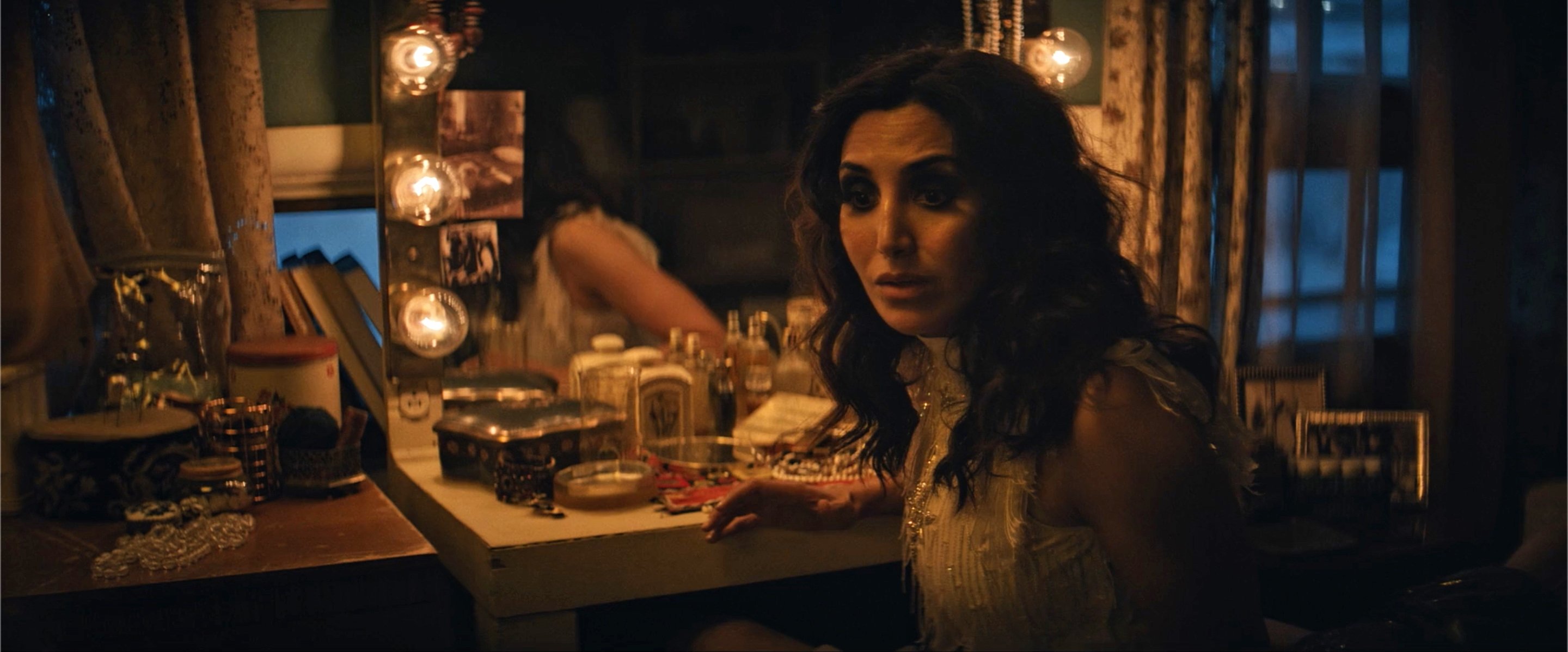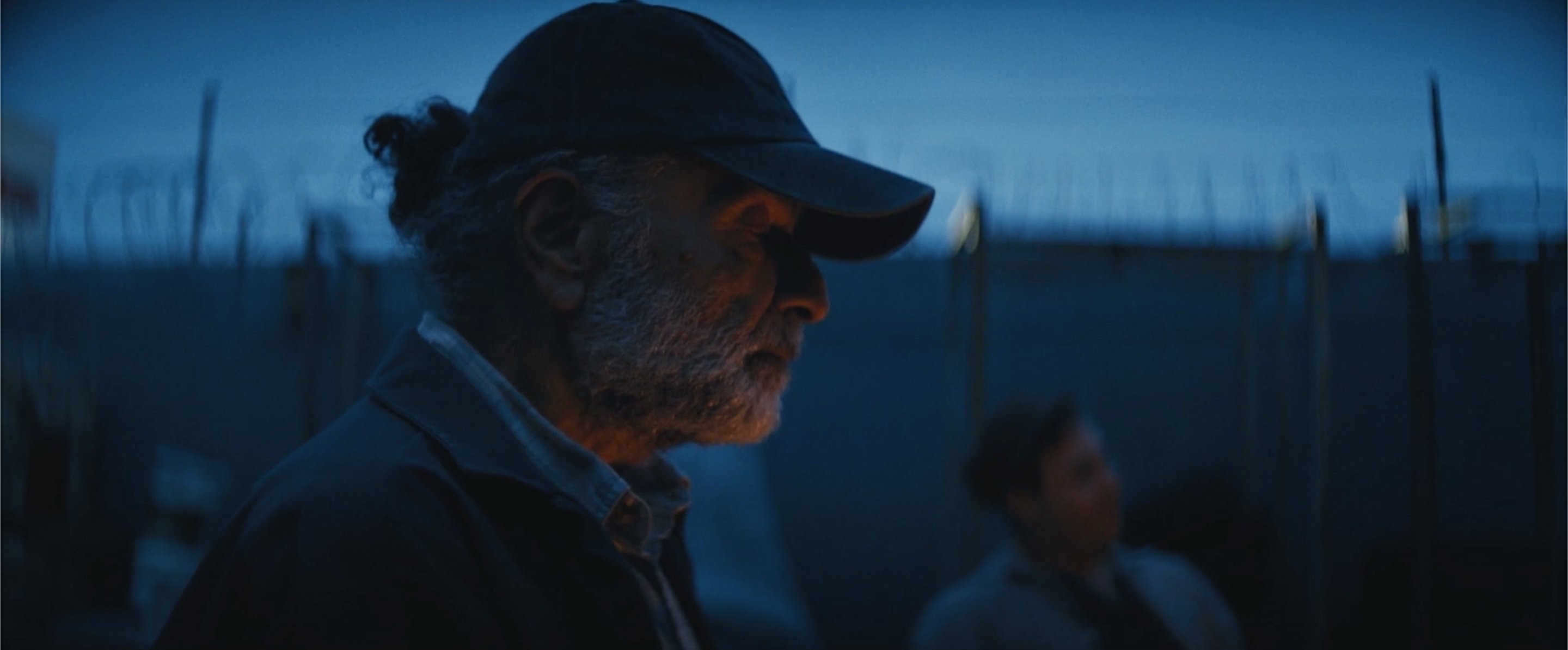
Taha: Camerawork in Service to Story
Cinematographer Joewi Verhoeven, NSC discusses this short-film project, which earned him a 2024 ASC Student Heritage Award.
In his final thesis project at the American Film Institute, Dutch-Chinese cinematographer Joewi Verhoeven, NSC collaborated with director Mahyar Mandegar to create Taha, a short film about an Iranian circus groundskeeper in Los Angeles who gets the chance to join the show. A beautiful, melancholic film with striking visuals, Taha won the 2024 ASC John Bailey Student Heritage Award in the Graduate Category, praised for its grounded approach, authentic lighting and exceptional use of color contrast.
The honor was presented during a ceremony held at the ASC Clubhouse on Oct.13, with the prize presented to Verhoeven by Ellen Kuras, ASC.

The award honors the memory of John Bailey, ASC, whose career spanned over 35 years and boasts a diverse and impactful list of credits. Bailey's filmography includes such iconic titles as American Gigolo, Ordinary People, The Big Chill, As Good as It Gets and In the Line of Fire. His exceptional contributions to cinematography have earned him widespread acclaim and deep respect within the filmmaking community. In addition to serving on the ASC Board of Governors for many years, Bailey was president of the Academy of Motion Picture Arts and Sciences from 2017 to 2019. He was awarded the ASC Lifetime Achievement Award in 2014, further acknowledging his remarkable influence and dedication to the art of cinematography. He passed on Nov. 10, 2023.
This recognition marked a significant milestone for Verhoeven, whose path to AFI included studies at the Beijing Film Academy and nearly a decade of shooting commercials and narrative in China. His move to AFI, he says, was spurred by the pandemic, which prompted a period of reflection. “I realized I wanted to pursue a path that would allow me to grow creatively,” he explains. Through AFI, Verhoeven refined his focus on visual storytelling: “Being surrounded by talented, like-minded people reignited my love for cinema.”
“We wanted to tell an honest story through visuals that felt true to the character,” Verhoeven shares, adding, “Everything had to serve the story, not just look beautiful.”

To bring Taha to life, Verhoeven, Mandegar, and their production team drew inspiration from classic films, paintings, and photography. “We studied films like Happy as Lazzaro and La Strada for their quiet observational style and honest lighting,” the cinematographer says. The team worked to create an authentic atmosphere, referencing 20th-century American painter Everett Shinn, known for his melancholic circus scenes. “It was essential to create a world that felt grounded and not overly stylized,” Verhoeven recalls.



This grounded aesthetic is especially evident in the backstage scenes, for which Verhoeven relied on practical warehouse lighting. “Most of the heavy lifting was done with practical fluorescents and subtle highlights that didn’t overpower the space,” he notes, explaining, “I wanted to capture a ‘dirty fluorescent’ look that felt real and fit the gritty, industrial warehouse setting.” Verhoeven incorporated the location’s existing industrial lights to achieve this look.

Throughout much of the film, Verhoeven focused on creating contrast with Storaro Yellow — a Rosco gel (#2003) pioneered by cinematographer Vittorio Storaro, ASC, AIC — and rich blues. “I really liked the Storaro Yellow we found during testing; it had this rich, golden glow that felt almost 19th-century, like an old richness,” he explains. “It added warmth to the scenes, especially in the circus environment, and became our go-to.” He complimented the yellow with deep blue, saying, “We played a lot with color contrasts. The blue hour scenes and the cool daylight through the windows would contrast with the warmth of the Storaro Yellow, creating a balance that felt grounded but visually engaging.”
Verhoeven often found creative solutions to maintain this color scheme. In one greenroom scene, where the trapeze artist shares her visions with the groundskeeper, he used natural light from the window to achieve the blue-and-yellow effect:


“We wanted blue hour, but the scene was taking much longer than a blue hour window would allow us,” he explains. “So we gelled the windows, starting with three layers of CTB and ND gels, then took the layers off as we approached magic hour, balancing the levels of the interior lighting to maintain consistent exposure.”
Verhoeven’s choice of the Panavision DXL2 camera paired with Ultra Panatar lenses added a distinct texture to the film. “These lenses, from the 1970s, have an organic look with flares that feel authentic and not overly stylized,” he says, noting their ability to deliver the honest aesthetic he and Mandegar sought. The choice of anamorphic lenses further reflected the protagonist’s perspective. “Our protagonist feels small in this vast world, and the anamorphic format brought that feeling to life,” Verhoeven reflects.

Making the film, Verhoeven’s biggest lesson was adapting to circumstances, including a last-minute casting change that brought in a non-actor as the lead. “Sometimes what feels like a setback turns out to be exactly what the story needs,” he says. “The experience of creating Taha taught me to stay flexible and trust the process, knowing that even unexpected changes can lead to something better.”
Today, Verhoeven is based in Los Angeles, continuing his work as a freelance cinematographer with a passion for storytelling. His experience with Taha, he says, reaffirmed his commitment to projects that foster creative growth: “It was a journey of discovery, and I’m excited to carry these lessons forward.”
You'll find details on the two other 2024 ASC Student Heritage Award-winning films here and here.

Learn more about the ASC Student Heritage Awards here.





